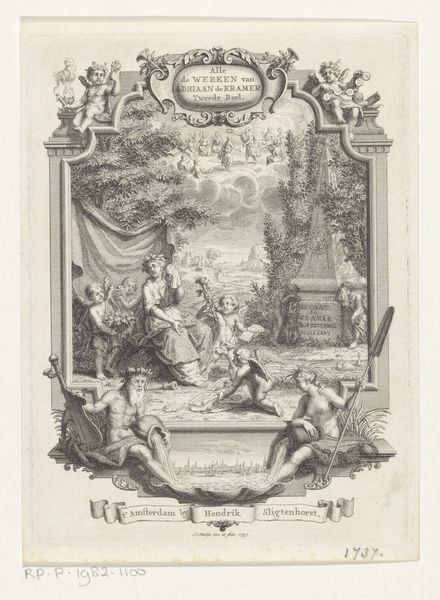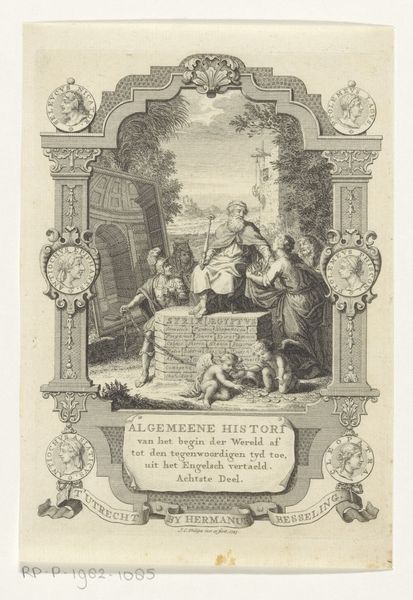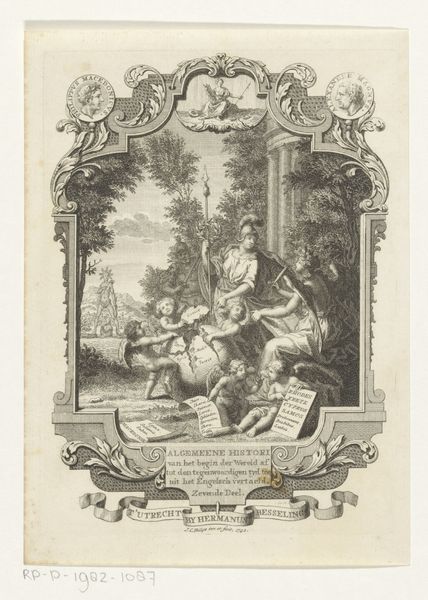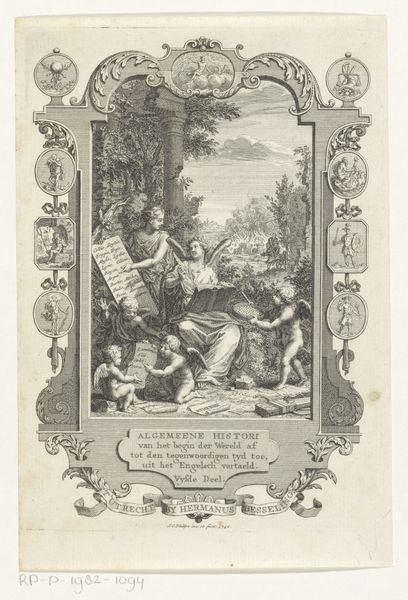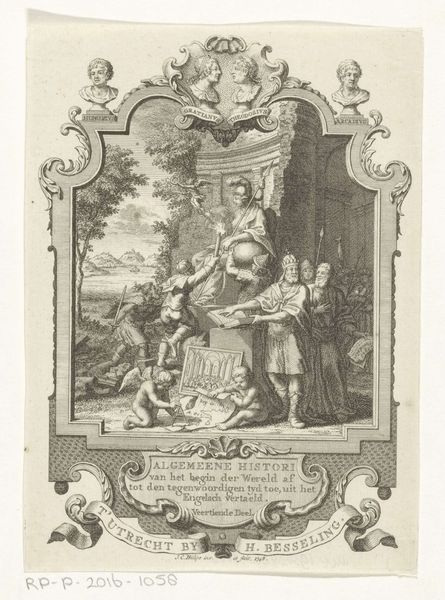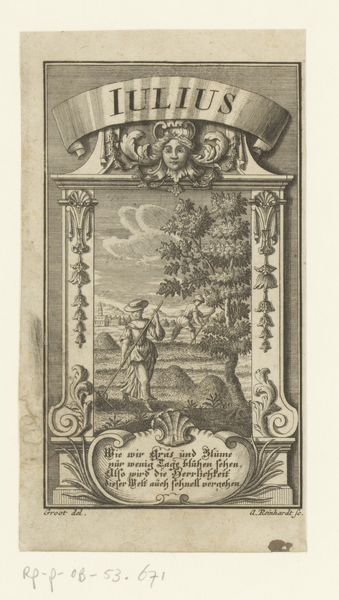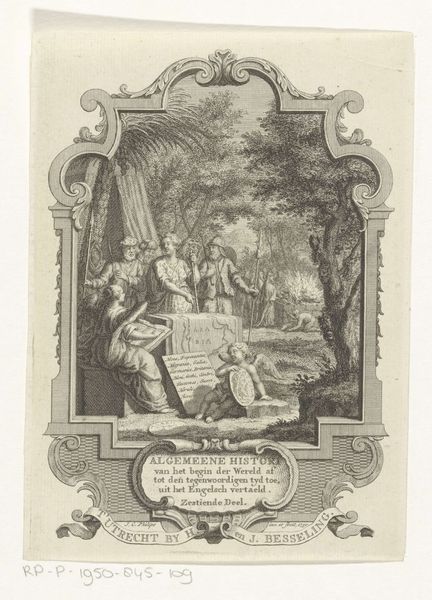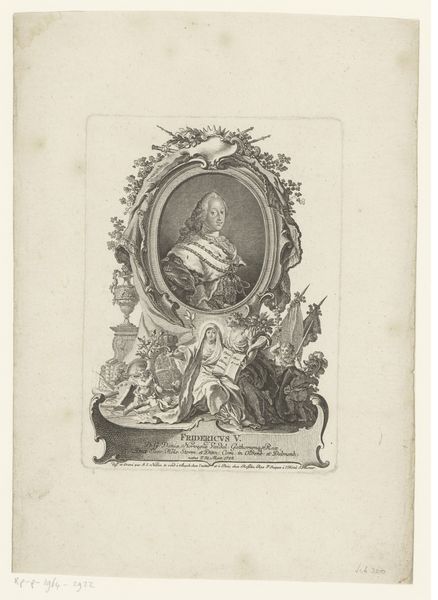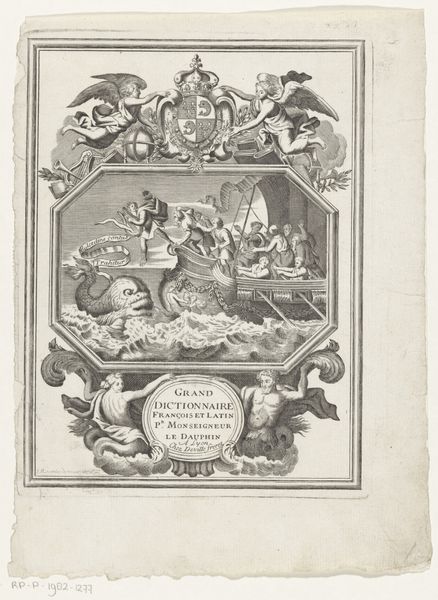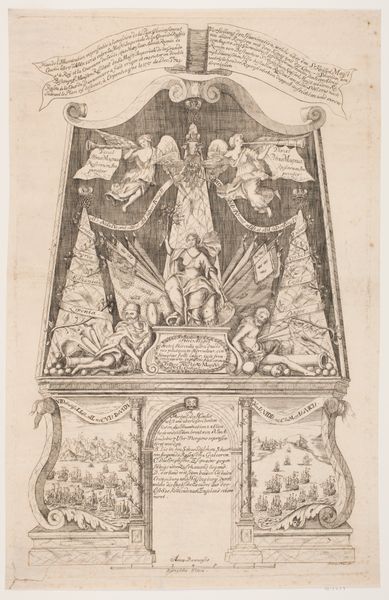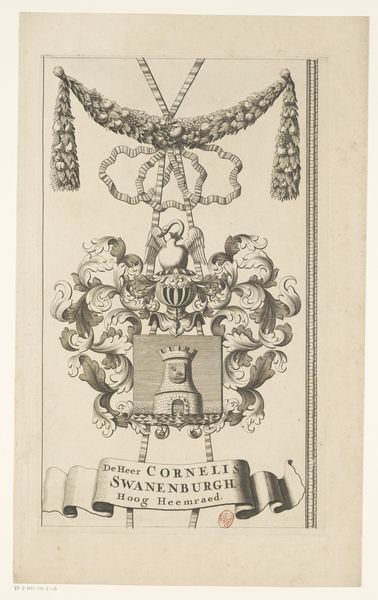
print, engraving
#
narrative-art
#
baroque
# print
#
figuration
#
history-painting
#
engraving
Dimensions: height 234 mm, width 169 mm
Copyright: Rijks Museum: Open Domain
Editor: We're looking at "Herder en herderin met bacchanten onder een begroeid afdak," or "Shepherd and Shepherdess with Bacchants under a Vegetated Shelter," an engraving by Philippe Thomassin from 1607. It has this very ornamented, almost teeming quality, that seems really representative of the Baroque, but it is more complex than that. What do you see when you look at this print? Curator: What strikes me is how this seemingly innocent pastoral scene is infused with the dynamics of power and privilege inherent in representations of rural life at that time. Who is invited to this idyll, and who is excluded? How does this imagery serve to obscure the realities of peasant labor and social hierarchies? Consider the role of these bacchanalian figures: are they truly celebrating freedom, or are they enacting a sanctioned form of release within a highly controlled society? Editor: So, you are saying that the seemingly innocent representation could have been deployed to mask something darker. But what in the visual language tells you that? Curator: Look at the central positioning of the text dedicating the work to a patron – this act of homage underscores the economic realities shaping artistic production. Also consider the idealized bodies and the abundance of the harvest. Are they reflecting the lives of commoners, or a carefully constructed fantasy for an elite audience? This juxtaposition points to the complicated role art plays in either reinforcing or questioning power structures. Editor: I never really considered that prints, which felt somewhat accessible because they are reproducible, also served as instruments for those with power. That makes me see the work in a completely new way. Thanks! Curator: And thanks to you. Thinking about it now, perhaps we can consider ways of activating our own artistic practices today in resisting rather than enabling inequalities.
Comments
No comments
Be the first to comment and join the conversation on the ultimate creative platform.
